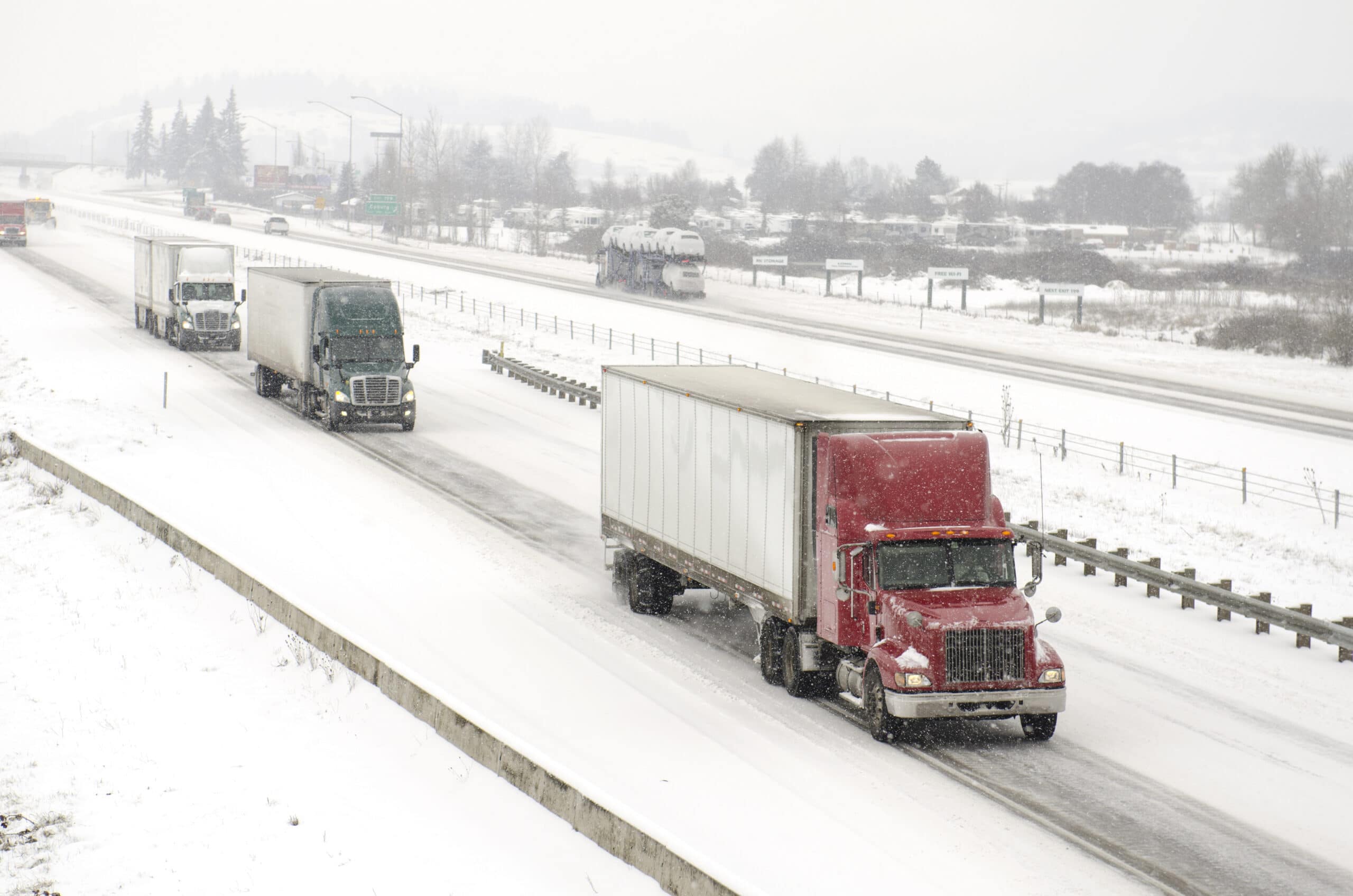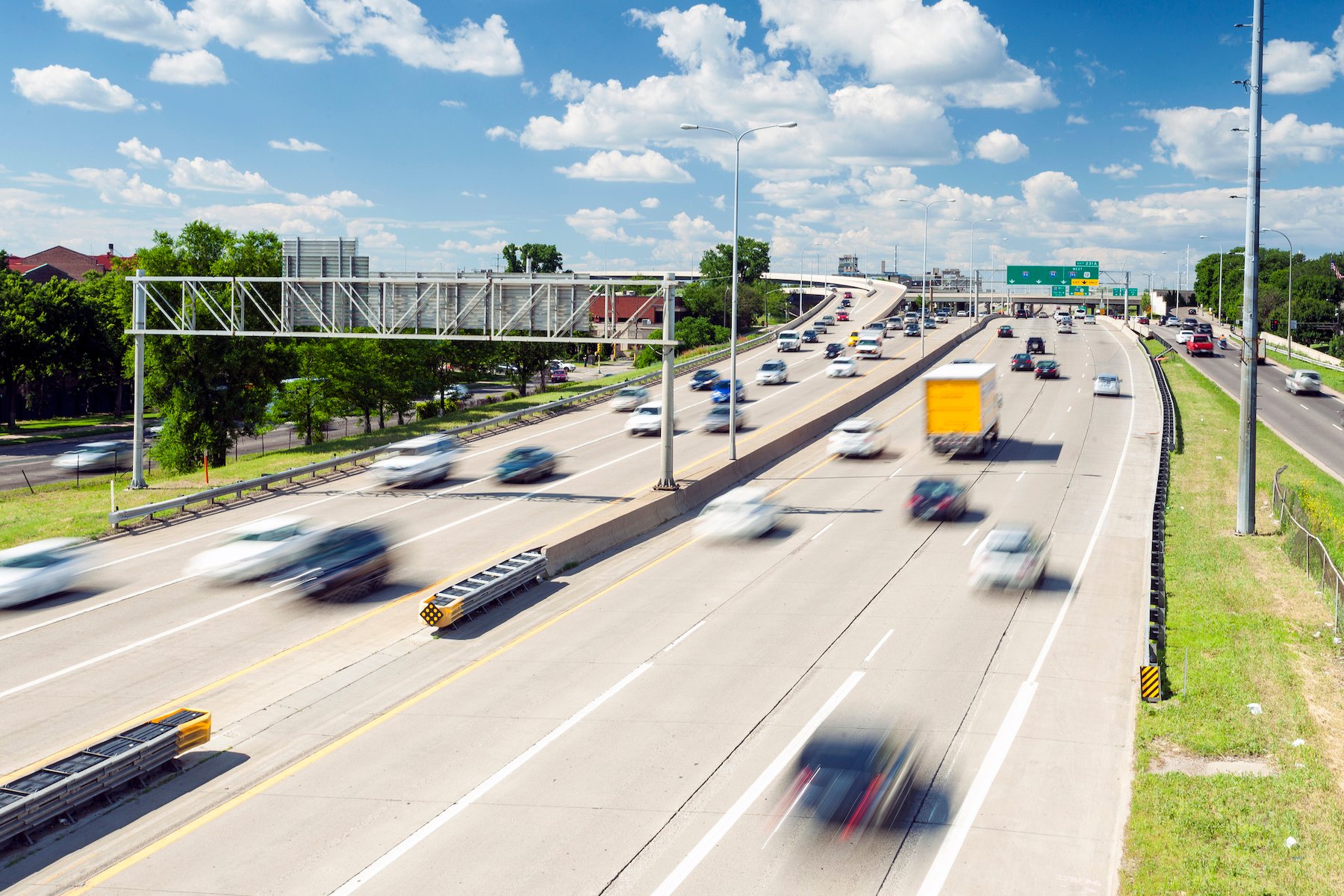Riding Out of 2021
In this final week of the year, the story hasn’t changed: The West Coast continues to battle extreme capacity constraints, and the weather in the past couple of weeks has only made it more difficult for shippers as the year comes to a close. Shippers should keep an eye on how the weather will affect truck capacity during the next few weeks in the Midwest and West. If capacity in Colorado were not already tight enough, we saw rates jump significantly, as many drivers protest operating in the state due to the harsh sentencing of a truck driver in a recent criminal case.
Truckload markets tightened slightly throughout the country leading up to Christmas, and they are expected to remain that way through the New Year’s holiday, as shippers push freight onto the road for the final week of the year. Looking at cross-border lanes with Canada, capacity continues to shrink, as vaccine mandates to cross the border take effect and potentially remove driver capacity to complete these lanes. Florida again sparked issues for shippers last week with capacity shortages. Drivers have been seeking higher rates for the final week of 2021, and equipment is tied up on loads longer due to post-holiday closing of facilities.
Through 2021, we saw an extraordinarily volatile and ever-changing freight market with record highs and lows being set almost weekly. Records ranged from truckload spot rates to driver wages, but in the end, the year has been a story of bottlenecks. The transportation industry had more mainstream media coverage in the past 12 months than ever before, with consumers feeling the impact of supply-chain issues. A record number of ships sat off Southern California ports, and a shortage of chassis created record port and rail congestion.
Now, even vessels at the Port of New York and New Jersey are sitting at anchor. “The backlog of vessels calling at the largest U.S. East Coast port by volume is the result of a 20% rise in imports through October and efforts to find ports that are not experiencing the same congestion seen at other gateways,” Michael Angell writes for The Journal of Commerce. “Along with more ships at anchor, the time spent there is growing, too. The Port Authority of New York and New Jersey reported that the current weekly average time at anchor was three days, double the year-to-date average wait at anchor … The increase in large ship calls means more freight than ever is discharging at New York–New Jersey.”
As we drive into 2022, we expect to continue to navigate these issues. Truckload markets likely will remain tight, especially on the West Coast, where freight builds up at ports and warehousing markets. Inventories remain lean, and Q1 is expected to be spent on rebuilding them. Shippers are likely to continue diversifying their supply chains from production, suppliers, and even port of entry throughout the year. We should continue to see shifts in the freight market that we believe will keep volatility around in Q1. Inflation is not going away as a top consumer worry. It could slow down the supply chain if consumers stop spending, but we believe this will not affect the supply chain overnight. We will also continue navigating the effects of the global pandemic, with upstream disruptions around the world having downstream effects here in the U.S.
2021 YTD U.S. Trailer Orders Lower Than 2020
While November U.S. trailer orders increased more than 84% compared with October, they were nearly 20% lower than November 2020. Net and new orders for the first 11 months of 2021 were both about 11% lower compared with the same time period in 2020, according to ACT Research.
“Trailer OEMs continue to be cautious regarding order acceptance, as they attempt to maintain acceptable delivery schedules given their available staffing and anticipated supply-chain support,” said Frank Maly, director of CV transportation analysis and research at ACT Research. “The difficulty of developing pricing in the current inflationary market conditions also impacts order acceptance. OEMs are attempting to avoid the renegotiation cycles that occurred earlier in 2021, and the best way to achieve that is to extend their orderboards in small steps as the year progresses.
“Expect trailer OEMs to continue closely managing their backlog horizons, which now edge into the second half of 2022 at current build rates.”
The movement of freight is changing in every mode, as shippers do their best to keep up with record demand while fighting congestion at multiple points throughout the supply chain. Shippers who think forward, use data and think outside the proverbial box on solutions, while partnering with companies such as Transfix, will come out of this ongoing freight rally in a better position and well ahead of competitors. The one huge win through this pandemic has been speeding up the digital transformation of the transportation industry.
With the uncertainty and volatility surrounding the U.S. economic recovery, shippers need a partner that can help them adapt and excel — no matter the circumstance. Shippers turn to Transfix for our leading technology and reliable carrier network. As volumes drive higher, we are here to help: Learn more about our Core Carrier program and Dynamic Lane Rates. As part of our ongoing market coverage, we’ll continue to provide breaking news, resources and insight into emerging trends and the pandemic’s impact on the transportation industry.
This communication may contain certain forward-looking statements that are not statements of historical facts. All such statements are based on current expectations as well as estimates and assumptions that, although believed to be reasonable, are inherently uncertain. These statements involve numerous risks and uncertainties, and actual results may differ materially from those expressed in any forward-looking statements. We undertake no obligation to update or revise any of the forward-looking statements contained herein, whether as a result of new information, future events, or otherwise.




